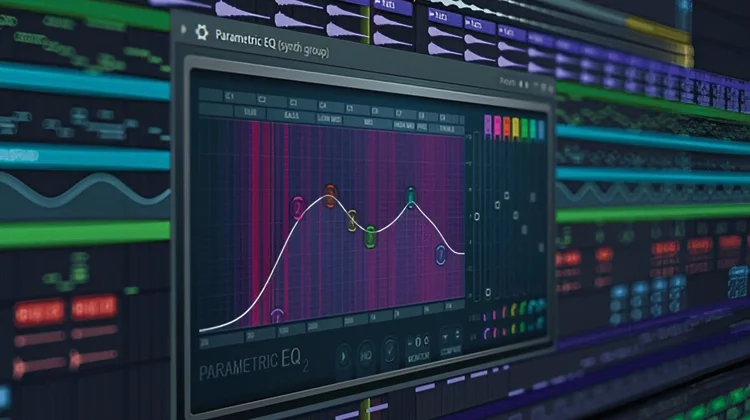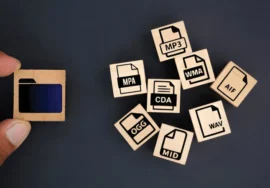
The Nitty-Gritty of Audio Editing: A Comprehensive Guide
Audio editing is a complex yet rewarding process that requires a keen ear, technical skills, and a creative touch. Whether you’re a podcaster, musician, or filmmaker, understanding the intricacies of audio editing can enhance the quality of your work. This comprehensive guide will delve into the essential aspects of audio editing, from basic techniques to advanced strategies.
Understanding the Basics
Before diving into the technicalities, it’s crucial to grasp the fundamental concepts of audio editing. Here are the key terms to familiarize yourself with:
- Waveform: A visual representation of sound waves.
- Sample Rate: The number of samples per second captured in an audio recording.
- A bit of Depth: The number of bits representing each sample determines the audio resolution.
- Frequency: The pitch of a sound, measured in Hertz (Hz).
- Amplitude: The loudness of a sound.
Essential Audio Editing Techniques
- Trimming and Cutting:
- Remove unwanted sections of audio to streamline your recordings.
- Cut-and-paste segments to rearrange the order.
- Fading:
- Increase or decrease the volume of audio to create smooth transitions.
- Use fades to avoid abrupt starts or stops.
- Volume change:
- Normalize audio levels to ensure consistent volume throughout your project.
- Equalize frequencies to balance distinct sounds.
- Noise Reduction:
- Cut unwanted background noise, such as hiss or hum.
- Use noise reduction tools to improve audio clarity.
- Audio Effects:
- Add creative elements to your audio, such as reverb, delay, or distortion.
- Experiment with various effects to achieve desired sonic characteristics.
- Audio Restoration:
- Repairing damaged or degraded audio files.
- Remove clicks, pops, or other artifacts.
Advanced Audio Editing Techniques
- Multi-Track Editing:
- Work with multiple audio tracks.
- Create complex mixes and arrangements.
- Automation:
- Automate changes to limits like volume, panning, or effects.
- Create dynamic and interesting audio landscapes.
- Audio Mastering:
- Apply final touches to your audio to optimize it for distribution.
- Adjust levels, EQ, compression, and limiting to achieve a professional sound.
- Audio Plug-ins:
- Use third-party plug-ins to expand your editing capabilities.
- Explore a wide range of effects, instruments, and tools.
Choosing the Right Audio Editing Software
The choice of audio editing software depends on your specific needs and budget. Popular options include:
- Adobe Audition: A powerful and versatile software for professional audio editing.
- Pro Tools: Industry-standard software used by musicians and sound engineers.
- Reaper: A budget-friendly choice with customizable meat.
- Audacity: free and open-source software suitable for beginners.
Tips for Effective Audio Editing
- Listen: Pay attention to the nuances of your audio to find areas that need improvement.
- Experiment and practice: Don’t be afraid to try different techniques and effects.
- Take breaks: Avoid listening to audio for extended periods to prevent ear fatigue.
- Back up your work: save your projects to avoid data loss.
- Learn from others: watch tutorials, read articles, or join online communities to learn from experienced audio editors.
Added Tips for Effective Audio Editing
1. Use Headphones:
- Headphones give a more correct representation of your audio than speakers, allowing you to hear subtle details that may be missed.
- Choose high-quality headphones with a flat frequency response to ensure accurate sound reproduction.
2. Work in a Quiet Environment:
- Background noise can interfere with your ability to hear and edit audio effectively.
- Find a quiet space to minimize distractions and focus on your work.
3. Take Breaks:
- Listening to audio for extended periods can strain your ears and make it difficult to judge sound quality accurately.
- Take regular breaks to rest your ears and prevent fatigue.
4. Learn from others:
- Watch tutorials, read articles, or join online communities to learn from experienced audio editors.
- Observing how others approach audio editing can help you develop your techniques and skills.
5. Don’t Be Afraid to Experiment:
- Audio editing is a creative process, so don’t be afraid to experiment with different techniques and effects.
- Try new things and see what works best for your specific project.
6. Practice Regularly:
- The more you practice audio editing, the better you will become.
- Set aside time each week to work on audio projects and hone your skills.
7. Stay Updated with Industry Trends:
- The world of audio technology is constantly evolving, so it’s important to stay up-to-date with the latest trends and innovations.
- Attend industry events, read trade publications, and follow audio professionals on social media.
8. Use Audio Editing Software Effectively:
- Familiarize yourself with the features and functions of your audio editing software to maximize its potential.
- Take advantage of shortcuts and automation tools to streamline your workflow and save time.
9. Consider Outsourcing:
- If you’re not confident in your audio editing skills or don’t have the time to do it yourself, consider outsourcing the work to a professional audio engineer.
- Many freelance audio engineers can provide high-quality audio editing services at a reasonable price.
10. Enjoy the Process:
- Audio editing can be a rewarding and enjoyable experience.
- Don’t get too caught up in the technical aspects of the process, and remember to have fun with it.
By following these additional tips, you can further enhance your audio editing skills and create professional-sounding audio for your projects.
Conclusion
Audio editing is a skill that can be mastered with practice and dedication. By understanding the fundamentals and exploring advanced techniques, you can create high-quality audio that enhances your projects. Whether you’re a hobbyist or a professional, this comprehensive guide has provided you with the essential knowledge to embark on your audio editing journey.





